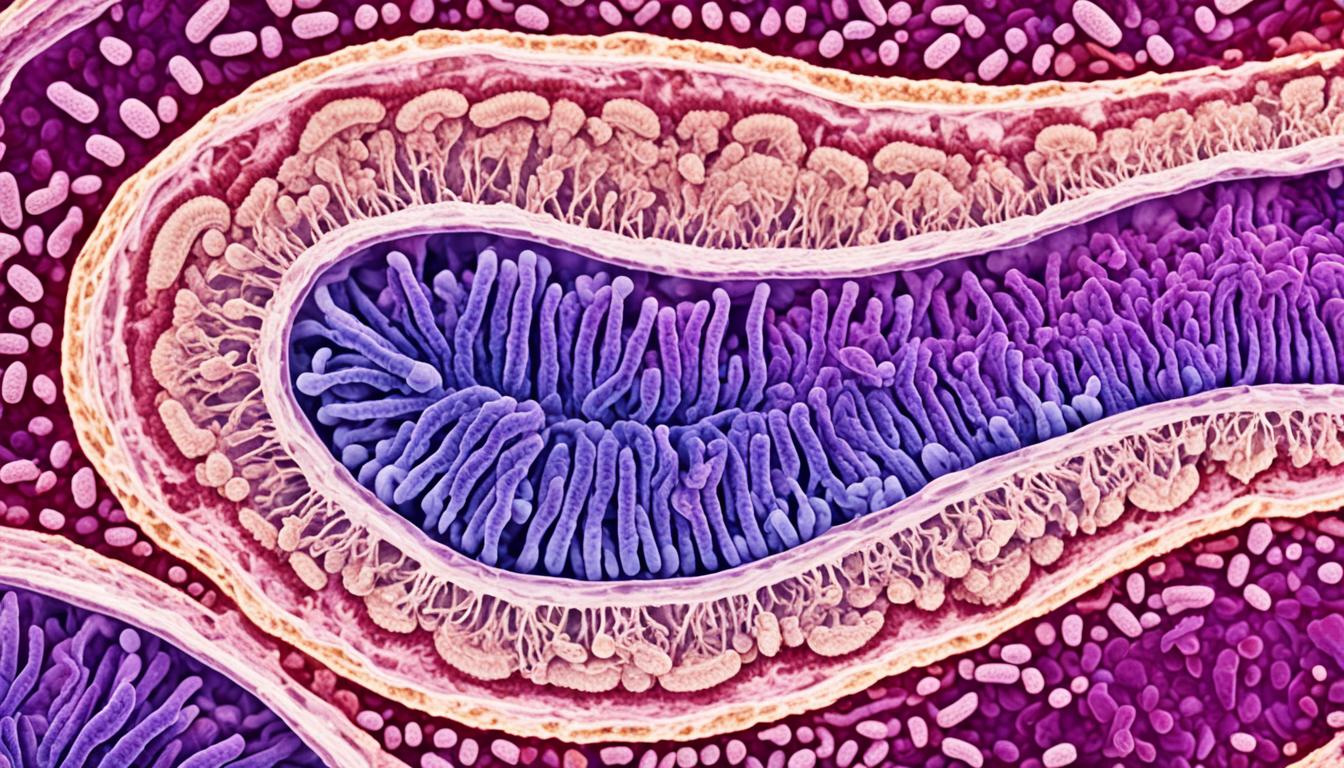Microscopic colitis is a long-term disease that causes ongoing diarrhea with no blood and appears normal on tests. It has two kinds: collagenous and lymphocytic. We don’t know its exact cause, but experts think issues with the immune system might be to blame. Things that make you more likely to get it include other autoimmune diseases, smoking, some drugs, and being a woman.
The most common sign of this disease is constant watery bowel movements. This is often painful and can make your stomach feel uncomfortable. Doctors confirm it by looking at cell samples from your colon. To help with the symptoms and reduce the disease’s effects, they usually recommend some treatments. Yet, a new method might offer even better results. Stem cell therapy seems to slow down the colitis and make it less severe by reducing the inflammation.
Key Takeaways:
- Microscopic colitis is a chronic inflammatory bowel disease characterized by chronic diarrhea without blood in the stool.
- There are two types of microscopic colitis: collagenous colitis and lymphocytic colitis.
- The exact cause of microscopic colitis is still unknown, but autoimmune factors are believed to be involved.
- Main symptoms include chronic watery diarrhea, abdominal pain, and discomfort.
- Diagnosis requires histopathological examination of colon biopsies obtained during colonoscopy.
- Treatment options include medications to control inflammation and manage symptoms.
- Stem cell therapy is an innovative approach that has shown promising results in slowing down the disease’s progression and inducing regression of inflammation.
What is Ulcerative Colitis?
Ulcerative colitis is a type of inflammatory bowel disease. It mainly affects the large intestine. This includes the rectum and left colon. The disease causes the inner surface of the intestine to become swollen, damaged, and inflamed.
The exact cause of ulcerative colitis is not known. It’s thought to be linked to inflammation and autoimmune issues. People with this disease often have symptoms like ongoing diarrhea, belly pain, and discomfort.
The symptoms can range from mild to severe. In bad cases, it can cause serious health problems. These include heavy bleeding, holes in the intestine, or a swollen colon which is very toxic. Ulcerative colitis can also affect other parts of the body, such as the joints, skin, eyes, and liver.
Doctors diagnose ulcerative colitis by checking for typical symptoms, looking at the intestines with a scope, and testing tissue samples from biopsies. The main goal of treatment is to reduce inflammation and manage symptoms. This may even lead to the disease going into remission. Various medications are often used for treatment.
If medications don’t work, surgery to remove the colon might be needed. It’s crucial for patients to create a treatment plan with their doctor. This plan should fit their unique situation and health goals.
The Role of Inflammation in Ulcerative Colitis
In this disease, constant inflammation is key. It causes ulcers, swelling, and damage in the intestines. Because of this inflammation, people with ulcerative colitis feel a range of symptoms.
This inflammation is sparked by the body releasing certain molecules. Immune cells then rush to the site, causing further damage. This ongoing cycle of inflammation and injury is what makes ulcerative colitis chronic.
Research to understand the disease’s causes is very important. It helps in creating better treatment options. These options can help improve the lives of those with ulcerative colitis.
| Treatment Options for Ulcerative Colitis | Potential Benefits |
|---|---|
| Medications | Control inflammation, manage symptoms, potentially induce remission |
| Surgical intervention | Removal of the intestine in severe cases |
If you have ulcerative colitis, it’s crucial to team up with your doctor. Together, you can figure out the best way to handle your condition. This should consider how serious your case is, your symptoms, and what you want for your health.
Treatment of Ulcerative Colitis with Stem Cells
Stem cell therapy is a new way to treat ulcerative colitis. It’s a type of chronic inflammatory bowel disease. The main aim of this therapy is to slow the disease. It also tries to make the inflammation go away and sometimes, put the disease into remission. Stem cells come from various places like bone marrow and adipose tissue.
For treating ulcerative colitis, doctors often use the patients’ own stem cells. These cells can enter the body in two ways. They go through the bloodstream or directly into the parts that need help. Stem cells’ ability to regrow tissues helps reduce inflammation and its symptoms.
The success of this therapy depends on a few things. The patient’s age, how long they’ve had the disease, and their health overall matter. It’s important for doctors to test to figure out the best way to treat each person. Around the world, studies are finding good results with stem cell therapy. This kind of treatment could be a big help for those with ulcerative colitis.

